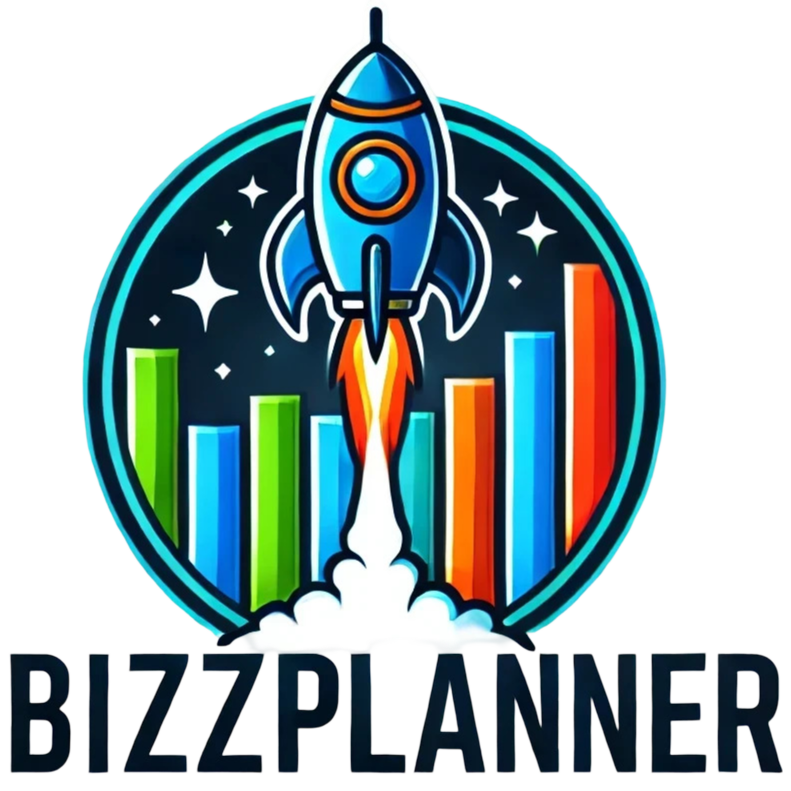Have you ever felt overwhelmed trying to figure out your business strategy? You’re not alone! Many entrepreneurs struggle to visualize how their business can create value and generate revenue. It’s a common hurdle, but luckily, there’s a great tool to help you out.
If you stick around, I’ll introduce you to the Business Model Canvas, a simple yet powerful framework that can help you map out your business idea clearly and effectively. You’ll discover how to break down your concept into manageable parts and see the bigger picture from different angles.
In this guide, we’ll dive into the essentials of the Business Model Canvas, explore its key components, and even provide practical examples. So, let’s get started on this journey to business clarity!
Key Takeaways
- The Business Model Canvas is a visual framework that helps you map out your business strategy in a clear way.
- It consists of nine key components: Customer Segments, Value Propositions, Channels, Customer Relationships, Revenue Streams, Key Resources, Key Activities, Key Partnerships, and Cost Structure.
- Real-world examples like Airbnb and Apple illustrate how to use the canvas effectively.
- Using the canvas can enhance customer retention and reduce costs by prioritizing the right customer segments.
- Creating your canvas involves focusing on one section at a time and collaborating with your team.
- Don’t forget to view your canvas as a living document, updating it as your business evolves.

1. Understand the Business Model Canvas
The Business Model Canvas is like a roadmap for your business, laying out how you deliver value to customers while making a profit.
It brings together various elements of a business into a single visual chart that’s easy to interpret.
Think of it as a snapshot of your business strategy; you can see the relationships between different components at a glance.
This model includes sections for customer segments, value propositions, revenue streams, and more.
To get started, check out the Strategyzer website, which offers templates and tools for creating your canvas.
2. Learn About the Key Components of the Business Model Canvas
The Business Model Canvas consists of nine core components, and it’s crucial to understand each one to effectively flesh out your business idea.
First up is the *Customer Segments*, which identifies the different groups you aim to serve.
Next are *Value Propositions*, describing what makes your product unique and why customers should care.
Then there’s *Channels*, which show how you’ll deliver your value—think online sales or retail partnerships.
Pretty soon, you’ll encounter *Customer Relationships* that outline how you’ll interact with customers, whether it’s personal assistance or self-service.
Don’t forget *Revenue Streams*, including the ways you’ll earn money, like subscriptions or one-time fees.
Next comes *Key Resources*, these are the essential pieces you need for your business to run smoothly—people, technology, and capital fall into this category.
Then we have *Key Activities*, referring to what you must do to deliver that value proposition.
*Key Partnerships* highlight who you’ll work with to make things happen, be it suppliers or distributors.
Last but not least, *Cost Structure* covers all your costs to keep the business running, from salaries to utility bills.
3. Discover Practical Examples of Business Model Canvas
Seeing real-world examples of the Business Model Canvas makes it easier to grasp how it can function for any business.
Take Airbnb, for instance. Their canvas revolves around providing unique accommodations (Value Proposition) through a website and app (Channels) directly to customers looking for lodging (Customer Segments).
Or look at Apple, where their customer segment includes tech-savvy individuals willing to pay a premium for innovation. Their value proposition? High-quality products that just work seamlessly across devices.
A practical tip is to check out canvases from renowned companies on platforms like Business Model Navigator. They provide insights into how various businesses have structured their models.
By analyzing these examples, you can spot the best practices and pitfalls, learning to tailor your own canvas in a way that resonates.

4. Explore the Benefits and Applications of the Business Model Canvas
The Business Model Canvas isn’t just for startups; it has broad applications across various business sizes and types.
One significant benefit is its visual appeal, simplifying complex strategies into an easy-to-understand format.
This simplicity helps teams collaborate more effectively, allowing everyone to be on the same page.
A practical example is how companies leverage the canvas to improve customer retention.
By focusing on the right customer segments, businesses can allocate resources more efficiently, reducing Customer Acquisition Cost (CAC).
Data from recent years indicates that businesses prioritizing customer retention can boost profitability significantly.
Furthermore, businesses can use channel analytics to tailor their marketing strategies based on real-time data, enhancing their outreach.
Another cool application is during digital transformation initiatives.
The canvas can help organizations visualize long-term goals while adapting to rapid tech changes.
Embracing technology like AI and IoT alongside the Business Model Canvas can lead to innovative data-driven business models.
These models allow for better decision-making and personalized customer experiences, setting companies apart in competitive markets.
5. Follow Steps to Create Your Own Business Model Canvas
Ready to craft your own Business Model Canvas? Let’s break it down into actionable steps.
First, start with a large whiteboard or poster. Visual tools work best to encourage creativity.
Next, outline your key components by focusing on one section at a time.
Begin with *Customer Segments*. Ask yourself, who are your ideal customers?
Then move on to *Value Propositions*. What unique solutions do you offer them?
After that, consider your *Channels*. How will you deliver your products or services?
Next, think about *Customer Relationships*. Will you have ongoing interactions or one-off sales?
Then tackle *Revenue Streams*. How do you plan to make money from your customers?
Don’t forget *Key Resources*. What essential assets do you need to operate?
Identify *Key Activities*—what must you do to deliver your value proposition?
Now, consider *Key Partnerships*. Who can help you succeed in your business?
Finally, outline your *Cost Structure*. What are your estimated costs for each component?
Once you’ve populated your canvas, review it with a fresh set of eyes.
Make adjustments to ensure each component aligns with your overall strategy and goals.
And remember, the Business Model Canvas is a living document; feel free to revisit and revise it as your business evolves.
6. Review Key Takeaways on Using the Business Model Canvas
Let’s summarize what we’ve learned about the Business Model Canvas.
Firstly, it’s a fantastic tool for visualizing your business model in a structured way.
Understanding each of its nine components is essential for creating a comprehensive canvas.
Real-life examples from established companies show how diverse applications can be.
Using the canvas can lead to improved customer retention and lower acquisition costs.
Incorporating data-driven strategies can give you an edge in the market.
When creating your canvas, focus on clarity and collaboration.
Finally, treat your canvas as a work in progress. As you gather more insights, keep refining it.
With these takeaways in mind, you’re ready to leverage the Business Model Canvas in your entrepreneurial journey!
FAQs
The Business Model Canvas is a strategic management tool that visually outlines a business model. It consists of nine building blocks including value propositions, customer segments, and key partners, helping entrepreneurs visualize and design their business strategies.
The key components are: Customer Segments, Value Propositions, Channels, Customer Relationships, Revenue Streams, Key Resources, Key Activities, Key Partnerships, and Cost Structure. Each component plays a crucial role in defining a sustainable business model.
You can apply the Business Model Canvas by first identifying and filling out each of the nine components specific to your business. This visual representation will help you analyze your business model, make informed decisions, and identify areas for improvement.
The benefits include clear visualization of the business model, enhanced communication among stakeholders, ease of iteration, and the ability to quickly identify and address weaknesses. It serves as a dynamic tool for strategic planning and innovation.
